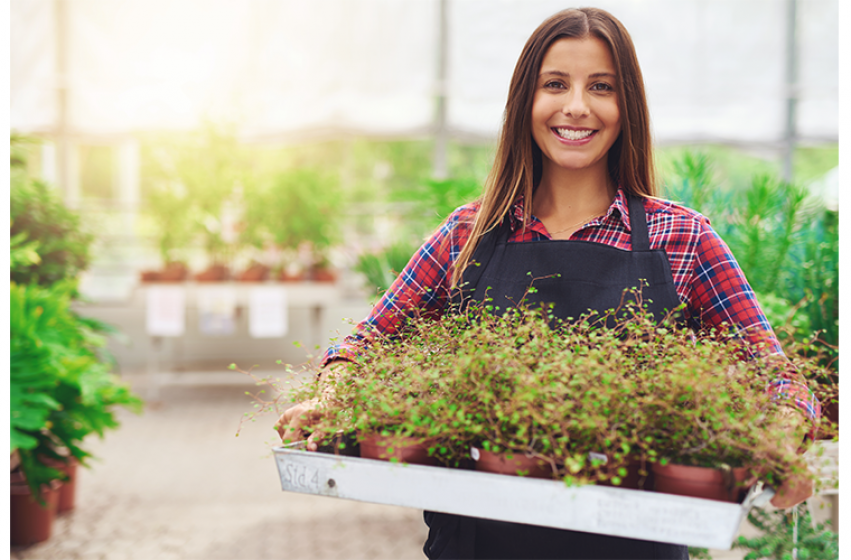It's actually not that difficult to keep houseplants happy, but you do need to pay attention to their basic needs and take care of any potential problems right away. Here are some tips to help you have a green thumb indoors.
Avoid Over Watering - it’s counterintuitive, but overwatering is the most common reason plants fail – particularly in the winter. Overwatering can cause browning of leaves, fungus, gnats, and dropping of leaves. Wait to water your houseplants until they become dry. Test the soil with your finger. When the top inch is dry, then add water.
Nice Idea: Use the same watering vessel each time, so you know to add the same amount whenever you water.
Neat Idea: place a cork pad under your plant’s saucer. This will eliminate water stains on your carpet or hardwood floors.
Clean the Green - keep your leaves free of dust and grime this will keep your plants healthier – plus they’ll look better. Take a half of a lemon and squeeze it into a quart of water using a soft cloth. Wet it with the lemon mix and wipe gently. Support the foliage using your other hand so you won’t bend or break the leaf. Unless you live in a dust bowl, you’ll probably only have to do this once every six months or so.
Feeding - your houseplants need food during the winter, but less is more. If your directions say 1 tablespoon or 1 scoop we recommend cutting that in half. Feed only once a month until spring. Personally I believe organic fertilizers are better for plants.
Who knew: Using filtered or bottled water will help eliminate dead ends. The minerals in tap water will settle to the ends of the leaves and cause the dead ends.
Check for Pests - keep an eye out for pests. They usually will attack the new growth and also hide on the underside of the leaves and along the stem. They are not harmful to humans and are easily able to control. If you do discover pests grab yourself an organic insect spray. Lay out some plastic under the pot and start spraying at the bottom of the plant.
Spray the foliage on the underside and then on top, working your way up. Your treatments may take several applications 7 – 10 days apart. The sooner you discover those pests, the easier it is to get under control, so check your plants often.
Wait to Repot - if you feel your plant needs to be repotted into a bigger container, it’s best to wait to late winter or early spring. Longer daylight hours and warmer temperatures are more conducive to root expansion. Choose a container that is 4 – 6 inches larger than the existing pot. When choosing a pot the saucer is important. You want at least 2″ of space between the saucer edge and the bottom of the pot.

